If you are waiting to work in a hotel or studying the process of a hotel, it will be more helpful to know about the type of rooms and room status. Before learning about the hotel room type, it is more beneficial to know about the things and facilities of a hotel room. It is also easier to study the hotel room type. There are different types of hotel rooms, and facilities vary from hotel to hotel.
Now let’s focus on the things and facilities in a hotel room. Any guest must first open the hotel room door when entering a hotel room. Most hotels today provide guests with the facility to open the door using a smart lock or electronic key card. This makes it possible to open the door much more accessible in less time and maintain the security situation at a higher level after closing the door. In the same way, double-lock facilities are also provided by the hotel to the guests using the room. This makes it possible to close the door of a room more securely from the inside. Due to this double-lock facility, no one else can enter the room. Thus, it is possible to protect the safety and privacy of the guest. Since many hotels have a magic eye on the door, it can be considered another security feature. Even if a person wants to meet the guest in the room by ringing the doorbell or knocking on the door, the guest can look at the person who is in front of the door (outside) using the magic eye on the door, and the guest can open the door only if he/she wants to. Every hotel room has a cupboard where the guest’s belongings can be put.
The hotel provides a laundry facility to guests. For that, a laundry list, including laundry bags and prices for washing different clothes, can be seen in the rooms of many hotels. The room also has a luggage rack to keep guests’ luggage.
Most hotels provide minibar facilities to the guests. A minibar is a small refrigerator inside the guest room. Inside the minibar are small liquor bottles, soft drink bottles, chocolates, peanuts, ice packs, water bottles etc. There is a price list with the prices charged separately for the items in the minibar, and it is kept near the minibar.
Most hotels today are trying to provide TV facilities in the rooms. In addition to the local channels, they also try to offer many foreign television channels. The list belonging to the TV channel is kept near the television so the guest can easily choose which channel to watch. The DVD facility is also being offered as a room facility by the hotel to a guest. Most of the hotels provide WIFI facilities in the room. This has allowed guests to browse the internet.
Many hotels have provided air conditioning or room heating facilities to every room.
Similarly, the hotels provide a telephone facility for all the rooms. To get a comfortable sleep, a perfect-condition bed has been provided, and it is decorated beautifully. Tea/coffee facilities (Tea/coffee/sugar bags are provided) are also offered to guests as a room facility. Many hotels offer a hot water kettle or a heater to heat the water. Two or more bottles of water are also provided to the room daily (Depending on the hotel policy). The hotel also provides room facilities like night lamps, ceiling fans and mirror tables. Many hotels offer a thick curtain and a sheer curtain in the room. A thick curtain does not allow sunlight to enter the room. And sheer curtain prevents the room from being seen in a row. Most rooms have a writing table, a notepad and a pen. If a balcony is connected to the room, it is also provided with a small table and a few chairs to sit comfortably.
Most hotel rooms have shower cubicles or a bathtub in the bathroom, and some rooms have both shower cubicles and bathtubs. Similarly, a commode, a bathroom sink, a mirror and both hot water and cool water are provided as a convenience in most hotels. In addition, bath towels, face towels, hand towels, and bath mats are available in the bathroom of a hotel room. At the same time, shower gel, shampoo conditioner, toothbrush and toothpaste are also found in the room’s bathroom. Some hotels also provide hair dryers and hair straighteners. Apart from these facilities, the hotel offers many other room facilities. The facilities offered vary from hotel to hotel.
Type of Rooms
Let’s focus on the Type of Rooms Now. There are different types of rooms in a hotel, and they are provided according to the needs of different kinds of guests.
Single Rooms (SGL).

Single Rooms are given to a single guest, and the room is provided with a single bed and other facilities to make a guest feel comfortable.
Double room (DBL).
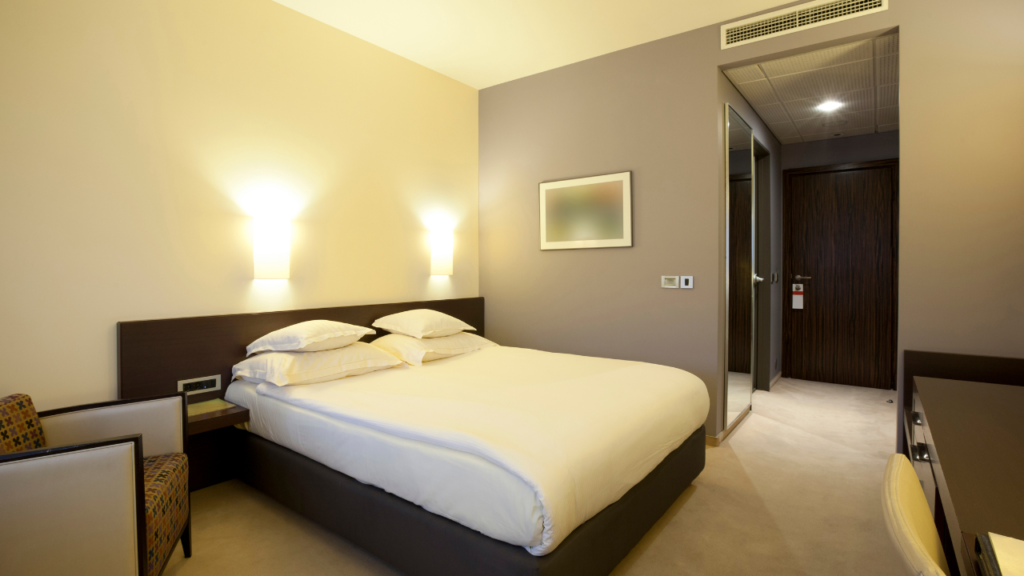
These rooms are provided with all facilities to fit two guests with a double bed, i.e. a king-size or queen-size bed.
Twin Room (TWN).

Twin rooms have two separate beds with all other facilities. Those facilities fit two people.
Triple room (TPL).
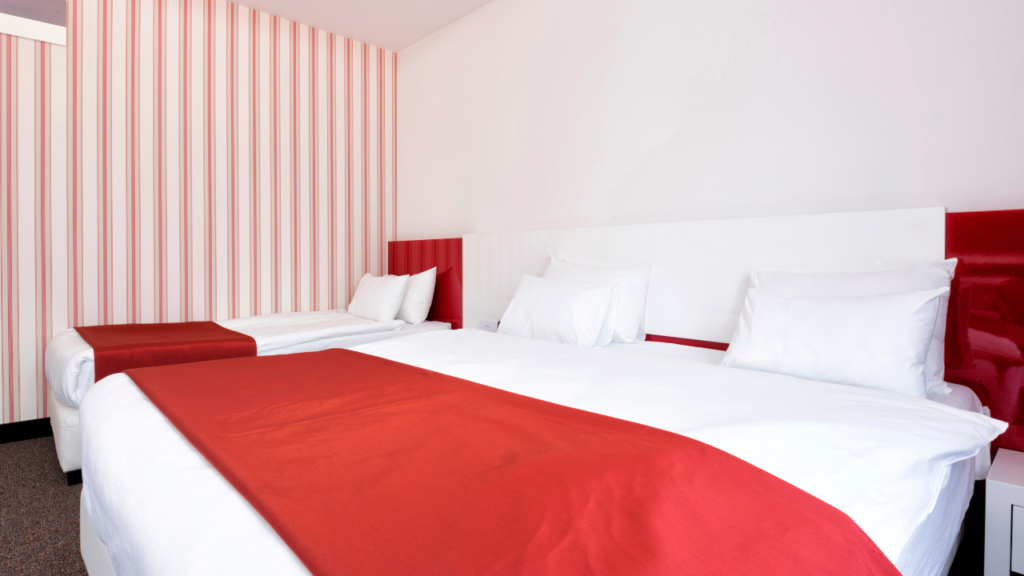
This room offers three separate beds or one king-size or queen-sized bed with one single bed with facilities suitable for three guests.
Interconnecting Rooms / Family Rooms.
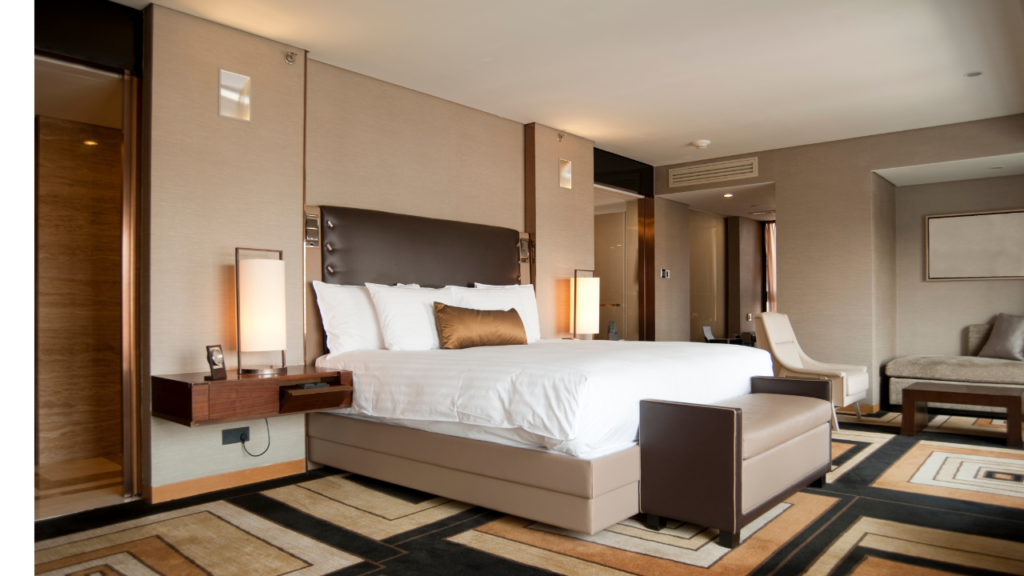
The size of these rooms is increased by joining two standing rooms together and having a standard door for both rooms in the middle. These rooms are more useful for families with small children because children don’t have to use the corridor to go to other rooms. It is more critical for the safety of the children and gives the feeling that all the services are in one big room for the family. Similarly, apart from families, these rooms can also be provided for other personal requests.
Suite Rooms
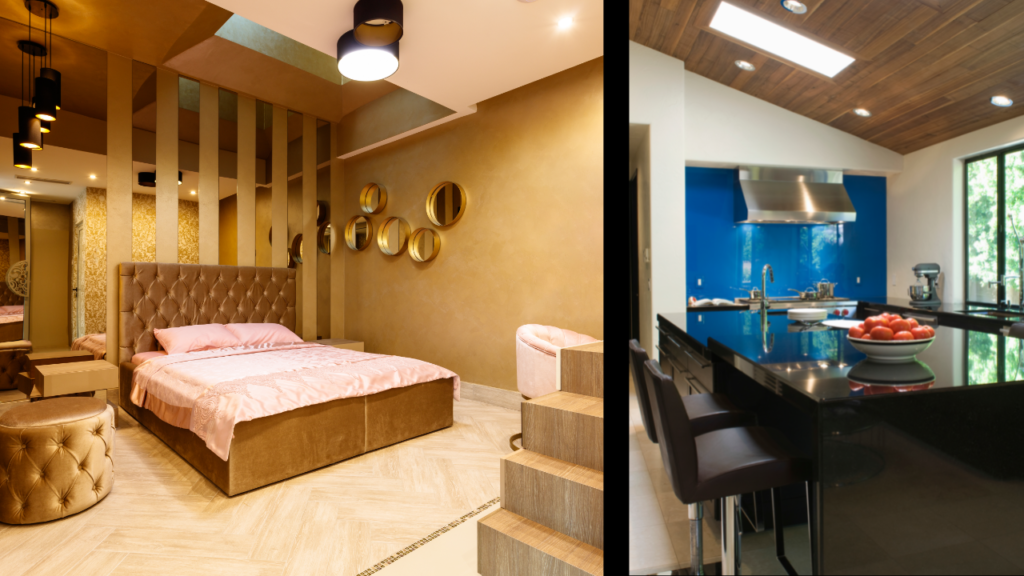
Rooms of this type require a large amount of space compared to other rooms, and the rooms in the hotel are also more expensive. However, the facilities are more than other rooms. Also, different suite rooms can be seen with different facilities. The most popular are the penthouse, presidential, corner, junior, and executive suite. The suite rooms have a kitchen, a small bar, several televisions, more tables and chairs, and refrigerators.
Cabanas
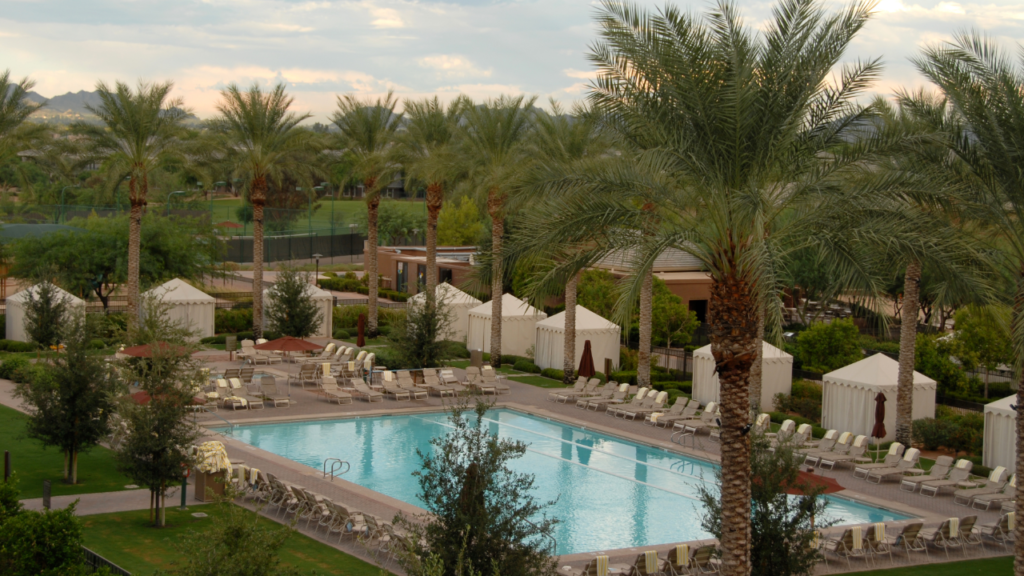
Located away from the hotel’s main building, it has all the facilities a room should provide. Many guests like to have cabanas for a more private experience. Cabanas range from standard to luxury.
Studio rooms
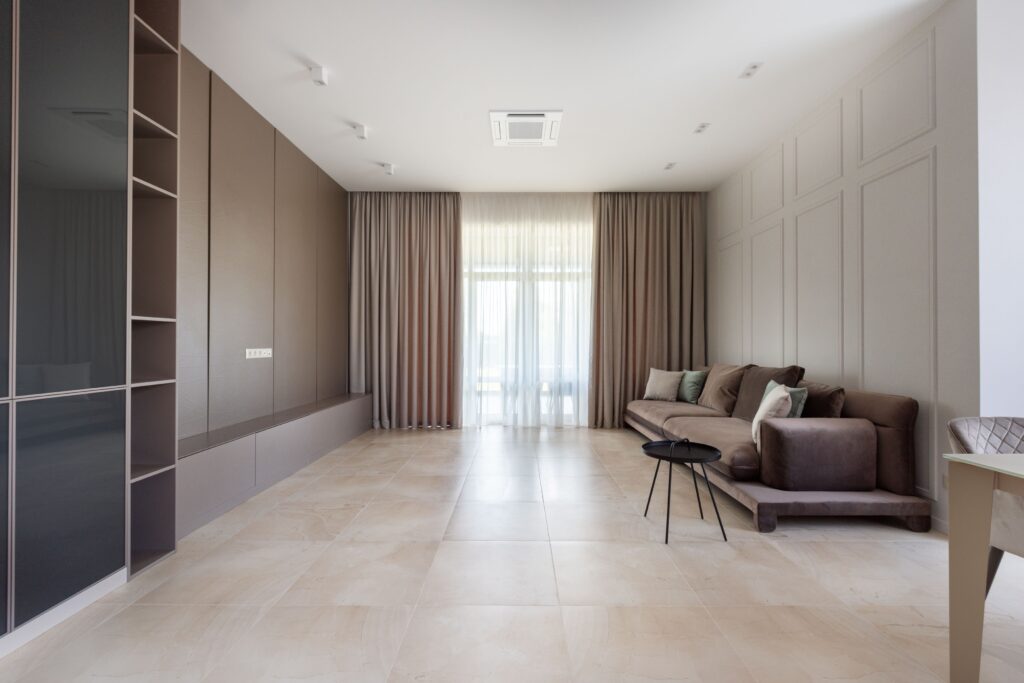
This particular room can be used as an office during the day and a bedroom at night. Divan-type beds are used in this room.
Mock-Up Room
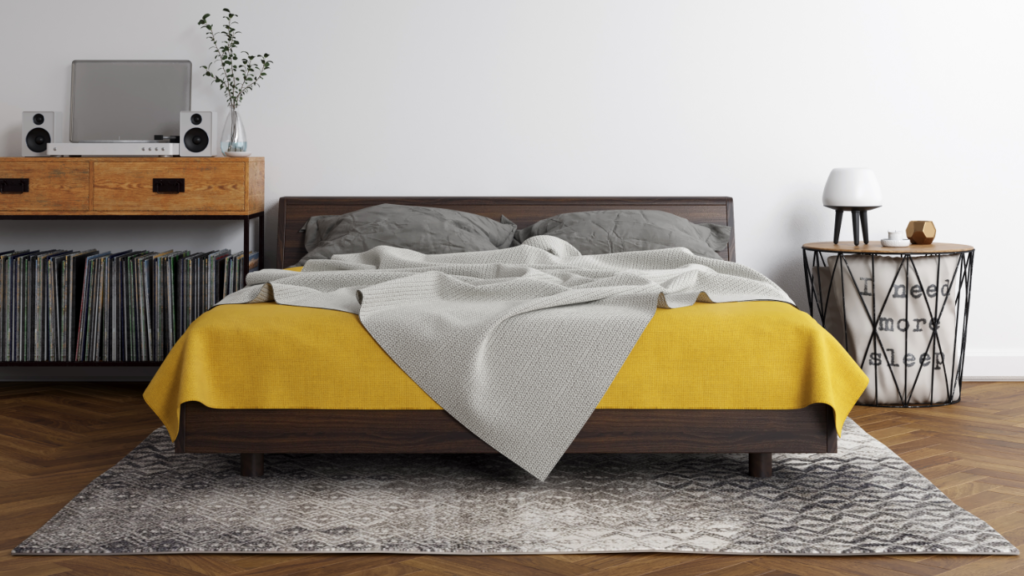
This room was designed as a model room and was created during construction. These rooms designed with all facilities are often used to show to travel agents or investors.
Standard Room (STD).
Standard rooms can have the necessary facilities with one queen-size bed or two double beds. Currently, standard rooms are also divided into different types. For example, super standard rooms and luxury rooms.
Deluxe Room (DLX).
Deluxe rooms have more space than standard rooms, and their facilities are more than standard rooms. For example, most Deluxe rooms have both a bathtub and a shower cubicle room. The room also has more amenities. Delux rooms are available in different forms and names, like super deluxe rooms and luxury deluxe rooms.
Capsule room.

The busyness of the competitive world is very high, and unique hotels provide these rooms for busy people. Generally, apart from capsule hotels, most of the other hotels do not have capsule room facilities. A capsule room is made only for sleeping in a small space with basic amenities. But nowadays, these rooms are also equipped with television and wifi. It can be said that these rooms are more prevalent in countries like Japan.
Chalets
Most of the chalets are made of wood and are located next to the hotel’s main building. Therefore, it has all the facilities that rooms should have, and the size and prices are determined based on the facilities provided.
Cottage room
The cottages are away from the main building in the hotel, and 2 or 3 rooms make up one cottage. All the facilities needed for the room are provided separately, and things like the shared cottage bathroom are made to be used in common. These rooms are especially suitable for certain institutions’ annual trips or school trips. Cottages can also be divided into different types, such as family cottages and the luxury cottage is the main among them.
Quad Room
Nowadays, you can see this type of room in many hotels, consisting of 4 beds. Simply put, these rooms are arranged so that four people can stay. In addition, some quad rooms have two double beds or two king-size or queen-size beds, and other facilities are provided. In some cases, these rooms are equipped with two modern-style bunkbeds. Sometimes hotels can offer these rooms with four single beds.
Queen-size Room.
These rooms got this name because they have a queen size bed. The most commonly used Queen size bed is 60″ X 80″ (152 X 203.5cm). In addition, Olympic Queen 66″ X 80″ (167 X 203.5cm) and full Queen size bed 54″ X 75″ (134.5 X 190.5cm) are also available. The room’s price depends on the size of the room and the facilities provided. Often these rooms are given to one or two people.
King-size Room.
These rooms got this name because they have a king-size beds. The most commonly used King-size bed is 65″ X 82″ (165.1 X 208.28cm). The room’s price depends on the size of the room and the facilities provided. Often these rooms are given to one or two people.
Hollywood Twin Room.
This room consists of two twin beds, and they are connected to a one-bed head. In some Hollywood Twin Rooms, there are cases where two twin beds are placed next to each other. The room’s price depends on the room’s size and amenities.
Murphy Room.

this is a special type of room, and it is not often seeing this type of room in every hotel. It got the name Murphy Room because of the Murphy bed used in these rooms. The art spaces website shows that the Murphy bed was first introduced to the world by William Lawrence Murphy around 1900. The speciality of this Murphy bed is that it can be unfolded only when a guest wants to sleep. In other cases, it can be folded. Most of the Murphy beds are fixed to the wall. When Murphy bed is folded, more space can be obtained in the room. There are different types of Murphy beds, and they are arranged in single and double beds. All other facilities are provided as per guest request.
Accessible Room / Disabled Room
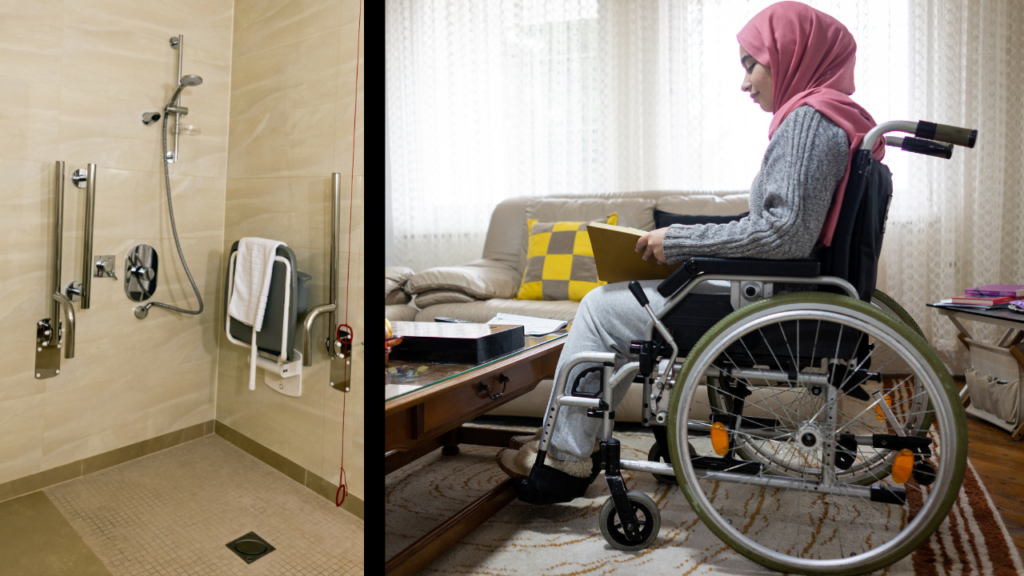
The accessible room is seen in many hotels nowadays. These rooms are set up for people with special needs. These rooms are arranged so that all facilities can be easily accessed. For example, the door pivot lock is set to work below other door logs in the other rooms. The magic eye on the door is also located at the down of the door. The bathroom, the shower, the bed, the writing tables and all the accessories are arranged below so guests with special needs can use them very quickly. The entrance door of these rooms is larger than the door of the other rooms and allows a guest in a wheelchair to enter the room quickly. Most of these rooms are located closer to the elevator and the restaurant. In some hotels, most of the accessible rooms are arranged on the ground floor. In some hotels, you can also see cases where a special butler is provided for this room.
Non-Smoking Room / Smoking Rooms

In Non-Smoking Rooms, smoking has been completely stopped, and a sticker indicating that it is a Non-Smoking Room has been posted on the main room door. These rooms are provided to non-smoking guests.
Smoking Rooms
Smoking rooms are provided for guests who like to smoke, and facilities for smoking are provided. For example, more cigarette packets, lighters, boxes of matches, and ashtrays are provided in the room.
Dust-free rooms.
“dust-free” rooms are a special type of room, and these rooms are mostly given to guests with severe allergies. However, some people find it challenging to deal with the dust in the air. For such people, these rooms are given if they make a special request.
Villa.

These rooms are given different names depending on the facilities provided by the villa. Luxury villa rooms, lake villa rooms, and standard villa rooms are the most popular. Villa rooms are located away from the main hotel building. The villa includes bedrooms, a kitchen, a balcony, and other facilities. Especially this type of room is allocated to water-loving guests. Most of the villas are located close to the swimming pool or lake.
Soundproof rooms
These rooms are made of soundproof material, and things like fibreglass or mineral wool are often used. As a result, such external sound is absorbed, and the room does not receive external sound. Some hotels also use things like soundproof glasses to prevent external noise. Mostly these rooms are taken by guests who want to spend time quietly, and some also use these rooms for sleeping and resting.
Camping rooms
Camping rooms are mainly used by camping guests and can be seen in categories such as standard and luxury. Safari hotels also provide spaces for safari guests, and they are very well set up in the jungle. These rooms are arranged with all facilities.
Lanai room
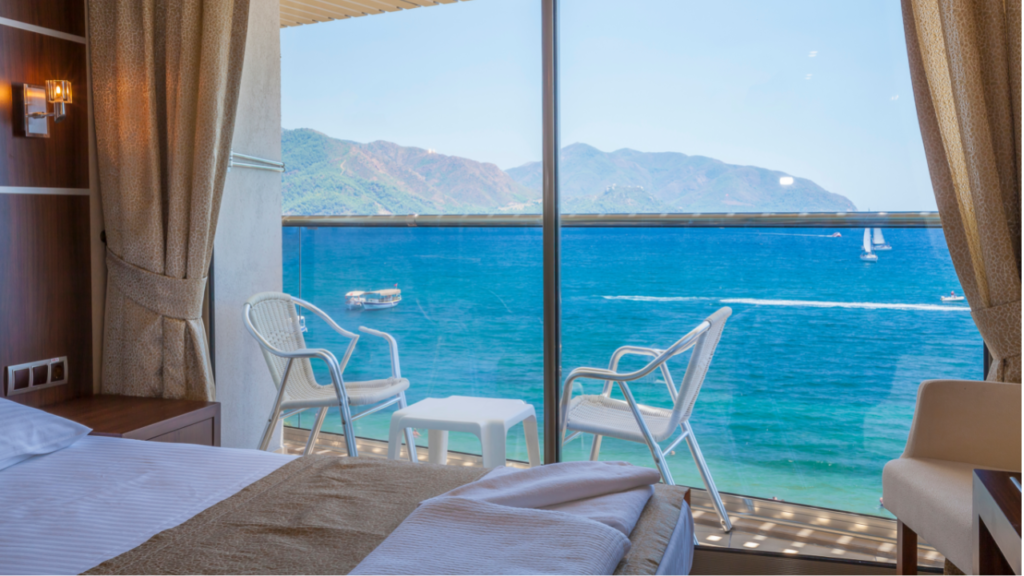
Lanai rooms are designed to have the best view in a hotel, which can often be seen in resort hotels. The idea can generally be overviewing hills, gardens, mountains, and sea views, and the price is slightly higher than other rooms. The cost of these rooms, which provide all the facilities very well, is higher because of the view. Nowadays, it is becoming more popular in many hotels.
Room Status.
Room Status is the condition of the rooms in a hotel at that moment. It is helpful for everyone who works in a hotel because they can know the condition of the rooms in the hotel at that moment. In particular, the room attendant in the housekeeping department can explain how many rooms they have to clean and which rooms should be cleaned first. And they can also set their day’s work schedule. The room status gives an idea to the receptionist which rooms can be sold to the guest. Abbreviations introduce the data in the room status report for ease of identification. Examples are VAC, DEP, OCC, and S/O. Now let’s focus on this.
Vacant Room / Ready Room (VAC)
This is to say that the room has been thoroughly cleaned and well prepared so it can be sold to the new guest. It is abbreviated as VAC. But there are cases where only the letter V is used in some hotels. In some other hotels, there are cases where it is also used as R or RD. Wich means Ready rooms. But most of the hotels use the abbreviation VAC for Vacant Room.
Vacant Dirty
This makes it clear that even though the room is vacant, it needs to be cleaned more and is still unsuitable for sale. For example, imagine that the night room attendant cleans room no 101, arranges the room well and declares it to the reception as a ready room (for sale). However, the receptionist has allocated room 101 to a guest who has made a reservation to this room at night. Imagine that a guest has not checked in to room no 101 until the morning and is at the vacant level. Even if such a room has been vacant without a guest using it when giving these rooms to a new guest, the room needs to be retouched (dusting and checking the room to ensure all items are working correctly, such as Television, Air conditioning and room amenities). And for the daytime, the room attendant wants to reverse (Open) the curtain in the room and make it proper and attractive. The evening turn-down service needs to be removed, and the bed need to be arranged again. The room attendant needs to refile the new fresh flowers to flower vas. Therefore, these rooms should not be cleaned with more attention than Departure or Occupied rooms. But some work needs to be done. Although the room is called vacant because it is clean without being used by a guest, it is called vacant dirty because the retouching mentioned above must be done. A Vacant Dirty room is abbreviated as V/D.
Arrival Rooms (ARR)
If the guest has come to the room, it is known as the arrival room. The receptionist should notify other departments, including the housekeeping department, that the guests have arrived. This is known as ARR as an abbreviation.
Occupied (OCC)
Rooms have been sold to the guests, and they have checked-In. In other words, it can be said that a guest is in the room. This is known as OCC as an abbreviation.
Due Out Room
This means that if the guest in the room is waiting for departure, this name will be used to know it. Abbreviated as D/O.
Check Out Room / Departure Room (C/O, DEP).
A guest has checked out from the room, and the room needs to be cleaned by the room attendant. A Check-Out Room / Departure Room cannot be sold until it becomes a Vacant Room / Ready Room.
When guests check out (departure), they should be given an excellent last impression of the hotel. If so, the guest can return to the hotel again in the future. The bellboy will take the guest’s luggage, and the room attendant should check the room of the guest who has checked out. There are mainly two objectives of such checking. One is that something of the guest may be forgotten or left in the room. For example, the guest’s passport may be forgotten in the safety locker. Or maybe other documents. If the room attendant finds such a thing, he/she can inform the receptionist quickly and give those items to the guest before leaving the hotel. This process is known as lost and found, and we will explain with another article about the lost and found procedure.
The other thing is to check if the guest damages the items in the guest’s room. For example, As a mistake or purposely, guests may have damaged the room’s bathroom mirror, television, glass windows etc. Likewise, some items belonging to the hotel may be left in the guest’s bag forgetting things such as the television remote control, decoration pillows, tea cups or mugs, hair dryers etc. If the guest damage hotel properties, the guest must bear the loss. If there is a shortage of items in the room, the guest can be told about it and checked.
While the room attendant is doing this process, the minibar should also be checked, and if the guest has used any items from the minibar, the guest should pay their value. Checking the minibar is done by the room attendant in some hotels, and separate staff members come to control the minibar in some hotels. Apart from this, if there is a bill to be collected from the guest to the hotel, it must be collected before the guest leaves the hotel. The front office cashier or the receptionist does this. The entire guest checkout process can only take a very short time. At the end of everything, a guest relation officer or receptionist should get comments about the hotel stay from the guest. It should be done only if the guest wishes and cannot be forced. Based on the guest’s comment, if there are any deficiencies in the hotel, the hotel can focus on them and provide better service to the guests. We hope to explain more about the guest room check-out procurer in another article.
Sleep out room (S/O).
This is an occupied room and can be termed a case where the guest has not slept in the room at night. For example, maybe guests went to another area with their friends and never returned till the morning. Sometimes guests inform the hotel they will not come to the night.
Day Rooms (D/R)
These rooms are available to guests for a few short hours. It can be seen as a changing room at special functions or as a changing room at a wedding.
Free Of Charge (FOC)
The hotel provides these rooms free of charge, and is often given to travel agents, ambassadors, hotel managers, and the board of directors.
Out of Oder (O.O.O)
These rooms cannot be sold and have been used until they are repaired due to maintenance problems or some defect in the room. Rooms with this condition must be repaired very quickly, or the hotel may incur a loss due to being unable to sell the rooms.
Very Important Person (VIP)
A VIP room is referred to as a Very Important Person. A head of state, celebrity, or ambassador visiting the hotel is included in this category. The hotel management hopes that the hotel staff will provide more attention and service to these people by naming them VIPs. But the thing to remember is that it is best to treat every guest who comes to the hotel as very important.
Do Not Disturb (DND).
If mentioned this way, room cleaning or service should not be provided to those rooms until the DND warning is removed. Guests often show this DND during leisure or sleeping time. Therefore, their freedom and comfort should not be compromised. Guests can complain about it if they are hugged for some reason. But if a DND board is hanging on the door for a long time, the room attendant must be informed about it to the floor supervisor.
Stay Over (S/O)
The rooms in this way indicate that the guests will stay in the hotel for a few more days. In a certain way, these rooms are known as occupied rooms in some hotels.
No luggage/ No bag (NLO /NL / NB).
This means that even if the guest checks in to the hotel and occupies a room, his bug is not in the room. When there is a situation like this, the room attendant must inform the floor supervisor and the desk attendant about it. The desk attendant will inform other departments also. Because it is problematic for what reason such guests came to the hotel. However, there are cases where such guests have not paid hotel bills and Departure themself without informing anyone.
Late Check Out (LCO)
Checkout time in most hotels is around 12.00 noon or 1.00 pm. But there are times when some guests delay checkout for various reasons. In such cases, the checkout may be delayed by a few hours. The prices charged for late check-out vary according to the hotel’s policy. But there are cases where most hotels will charge the full room rate from the guest after 6:00 pm even if the guest has not checked out. A late checkout can be given only in cases where another guest does not reserve a room for that room or where the reserved guest can be given another room. In cases of fully booked, late checkout is done very rarely.
Room Status Report
The Room Status Report is about the current condition of the rooms after checking with the housekeeping floor supervisor. This means after the room attendant cleans and prepares the rooms, the floor supervisor checks each room is correctly clean and arranged. After that floor supervisor marks each room’s condition in the report. In some hotels, the floor supervisor, from time to time, contacts the housekeeping desk attended and gives the room status about the room. Then the desk attendant makes a master room status report and gives it to the executive housekeeper’s supervision. After that, the report will be delivered to the front office department. For ease of study, the sample room status report is shown below.
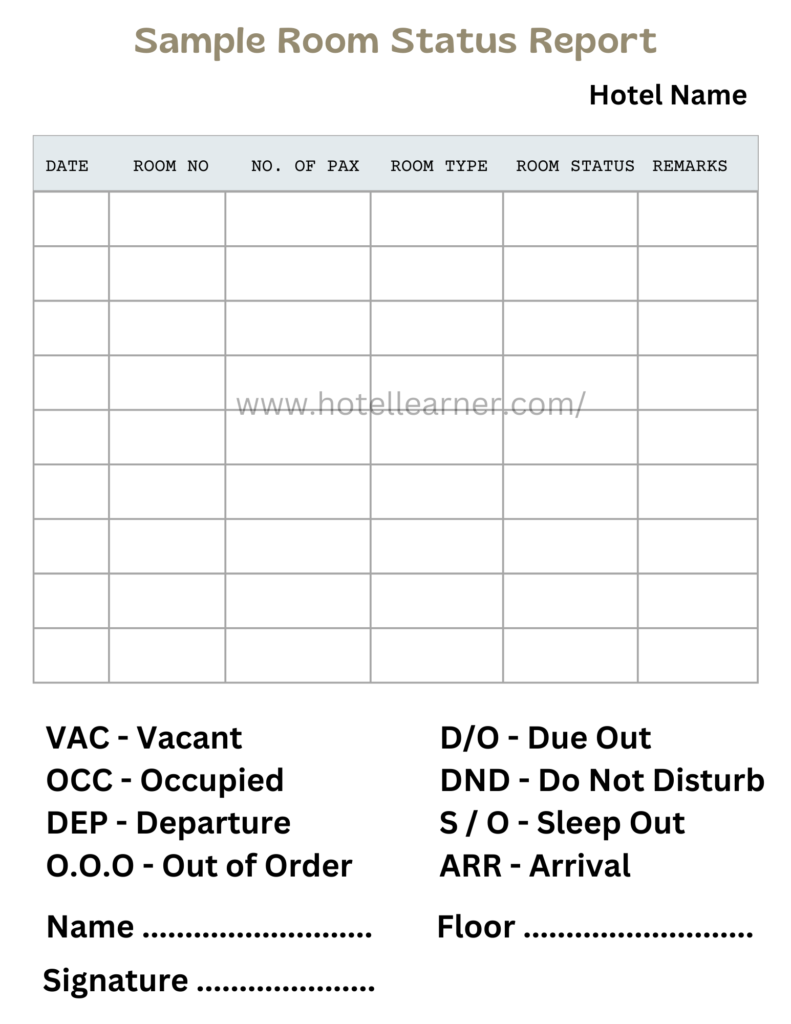
The room attendant should also inform about the number of beds occupied. For the room status report, the room attendant should give the report containing the correct data about their cleaned and prepared rooms. The Front office department should receive the correct room status report from the housekeeping department.
If the room status report provided by the housekeeping department is wrong, the receptionist cannot sell the correct room. For example, imagine that room no 101 is occupied. By mistake, and mentioned as Vacant in the room status report. According to the information received by the reception, since room 101 is vacant, they will sell this room to a new guest. When the newly arrived guests have gone to the 101 room, when the 101 room is opened, they can see that it is an occupied room and there is a guest. Both parties of the guest can complain about the situation.
Similarly, the room status must be mentioned correctly in case of a room change. For example, imagine that the guest in room 102 is on a half-board basis, and they have been transferred to room 105 because they have expressed that they do not want to stay there due to some defect in the room. In this regard, the receptionist must notify the other departments, such as the restaurant and account, about the room change. If not, restaurant staff may think the guest in 105 is newly registered and will bill him for the meals even if the guest is entitled. The restaurant staff can wait until the guest arrives in 102. In the case of bullying, this becomes a problem for Cahire and the accounting department. Therefore, room change must be reported. It is mandatory to mention in the housekeeping status report that there was a room change.
Extending the number of nights in the room.
In this case, the room status report should be updated. It is also mandatory for the reception to feel it to other departments.
Things that room attendants should pay attention to daily.
There are several things that room attendants should pay special attention to daily. These facts should also be mentioned in the room attendant report, and this information and facts are also obtained for the room status report.
The room attendant should give immediate attention to the rooms mentioned as early make-up while cleaning and setting up the rooms. Early make-up refers to an occupied guest asking for his room to be set up quickly. If the early make-up board is hung on the room door, those rooms should be cleaned immediately. Due Out rooms are cleaned at the end.
Additionally, if a Do Not Disturb (DND) sign is posted on the guest room door, avoid disturbing those rooms. Do not attempt to provide cleaning service in any way until the board is removed. Most of the guests in DND rooms may be sleeping, or they may be spending free time. Therefore, no hug should be made for their well-being or freedom.
But if such a room (DND) is available, a room attendant can send a DND card to the room under the door of a room with a DND board, asking if the room needs cleaning service or things like extra towels and water bottles. Room attendants should be informed by the floor supervisor about the DND room situation and should also be mentioned in the room attendant status report. In the room status report, you can see the cases mentioned as DND.
If the DND board is not left in the room for more than 24 hours, the floor supervisor should put the second DND card or the Red DND card under the guest room door. Later, if there is no answer from the guest, the floor supervisor should be informed about the situation by the executive housekeeper and duty manager. After that( according to the duty manager’s advice), the receptionist should call the DND room. If the guest doesn’t get an answer, the door needs to be opened by the hotel staff.
Opening the door without the knowledge of a guest is known as the final process. to open the door in this kind of room, should participate some of the hotel staff, such as the security agent, room attendant, floor supervisor, executive housekeeper, receptionist, and duty manager. The floor supervisor or executive housekeeper opens the room door, and others can be called witnesses. A reason to open a DND room is without knowledge of the guest because the guest has not responded to any message from the hotel for more than a day. In some cases, guests can be seen as sick in the room. In the same way, some guests have run away from the hotel without paying using the DND board. This kind of situation should be mentioned in the log books of the departments of all the participants that the door of the room was opened.
If any guest refuses to clean the room, it should be mentioned in the room attendant status report. If a guest refuses to clean a room for more than two days, he must have special permission from the executive housekeeper.
Room attendant, another thing to pay attention to is scanty/light luggage guests. Attention should be paid to the guests who bring less luggage because they can check out without paying the bill. If a guest leaves his luggage in the room and does not use it for a few days, the room attendant should inform the floor supervisor.
In addition to these facts and data, many other things can happen in hotels. The procedures followed vary from hotel to hotel. But most of the common points were explained in this article. Apart from this, please comment below regarding the above topics if you have any other matters.
1 comment / Add your comment below